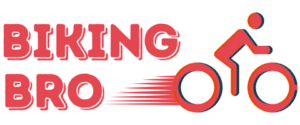There’s nothing worse than having a nice bike ride in the countryside be interrupted by squeaky brake levers.
Aside from the annoying noise they make, faulty brake levers mean that you can’t enjoy the peace of mind of riding your affordable hybrid bike for fear of what might happen if you actually need your brakes to work. The good news is you don’t have to tolerate squeaky bike brakes.
We’ve prepared a handy guide for you on how to fix squeaky bike brakes on your own, quickly and effectively.
How to Fix Squeaky Brakes on a Bike
Some of the signs of poorly setup brakes include unwanted vibration and contamination.
In the following section, we’re going to provide you with helpful and useful tips on how to fix squeaky bike brakes once and for all, no matter what type of bike you have.
1. Rim Brakes
When you’re working with rim brakes, you must start by cleaning the brake blocks, the rim’s braking surfaces, and adjusting brake calipers.
This will enable you to ensure that they’re working properly. The next thing you should do is make sure that the bolts that are used to attach the brake blocks and frames are nice and tight. Brake noise often happens as a result of loose parts, which is what you don’t want.
Another reason for annoying squeaky brakes is contamination from oil, water, and excessive chain lubing. You can easily pick up oil and water from riding through puddles and contaminated roads but there’s no excuse for excessive chain lubrication.
Luckily, you can remove these contaminants easily with a degreaser. There’s no shortage of brake cleaners that are designed to keep your braking surfaces clean and in good working order.
Poorly maintained brake blocks can also cause noise and this usually indicates wear and tear. If that’s the case, then you can easily fix this problem by sanding away the brake block’s top layer to get rid of any grit that might cause problems. Worn-out brake blocks cannot be fixed; you’ll have to replace them. However, unevenly worn brake blocks typically indicate poor setup.
In addition to checking your brake blocks, you should also look at the rims. There’s a machined surface on most aluminum rims which helps to improve braking performance.
A dirty rim with months or even years of built-up debris can negatively affect braking efficiency. You can easily fix this problem as well by scrubbing away any dirt residue that you notice.
If the bike brakes are still not working quietly after you’ve cleaned them then this means you’re dealing with vibration issues which are also caused by poor bike setup.
One way to fix this problem is to toe in the pads. The whole point of installing brake blocks is to align them with the rims. A toe-in helps to guarantee that the front section of the blocks is aligned with the rim.
There are special tools available on the market to facilitate this process. You can also use a thick piece of cardboard as well, or even a folded-over business card! Simply release the brake blocks, place the cardboard behind the back of the block, and tighten the bolt.
If your brake blocks are badly worn and none of these solutions help, then you might have to replace them with new ones.
Contaminated rims and brake blocks could be the problem here but you’re spoilt for choice with a number of different brake block compounds at your disposal which are designed to cater to different demands, conditions, and rim materials.
Sometimes, the easiest and quickest solution is to change the kind of brake blocks used altogether. Either way, it’s helpful to know how to fix squeaky brakes on a new bike or even an older model.
2. Disc Drakes
Squealing disc brakes happen when the pads or rotor is contaminated.
That’s why you should go easy on the lubricants you use on your bicycle, especially if it contains disc brakes as part of its makeup, or avoid lubricants of any kind.
The regular wheel rim and rotor cleaning using an oil-free disc brake degreaser is one of the easiest ways to prevent your brakes from squealing. Another way to keep things quiet is to clean your pads with sandpaper or simply grind them clean.
However, if the pad is soaked through with grease, then there’s nothing else for it but total replacement. According to leading manufacturer Shimano, you should never use chemicals or degreaser on brake pads.
One of the steps involved in learning how to fix squeaky bike disc brakes is to clean all braking surfaces and components. Disc brake cleaners are available for purchase and most of them are specifically designed to instantly fix the problem.
Alternatively, you can use isopropyl alcohol and a small rag to clean the disc rotors. You can clean the rotor while it’s attached or remove it from the wheel, it’s up to you.
It’s also possible to end up with contaminated disc pads, which are quite difficult to clean because you have to remove them from the bike first. However, you can get rid of the uppermost layer of debris by using sandpaper and this can be a great way to get rid of any glazing. But if the situation is really dire, then you’ll have to buy new pads.
You may have heard rumors about people who actually bake their brake pads in the oven to try and clean them thoroughly, but this approach isn’t proven nor recommended by brake pad manufacturers so we can’t really vouch for its effectiveness. Try it at your own risk or stick to the tips we’ve offered in this article.
Conclusion
Well, there you have it! That’s how to fix squeaky brakes on a bike, and as a cyclist, this is an essential skill that can help you to maintain your bicycle in tip-top condition for many years to come.
